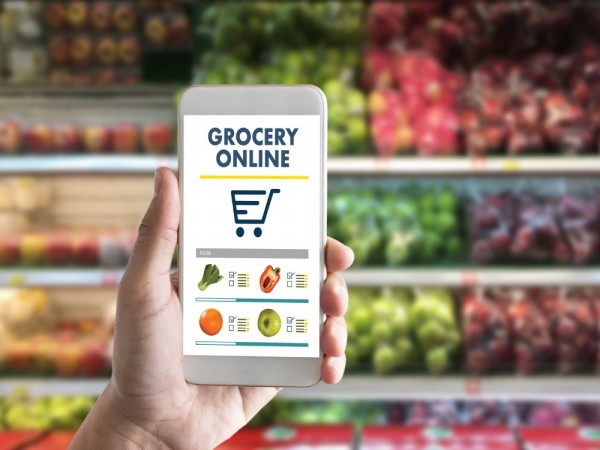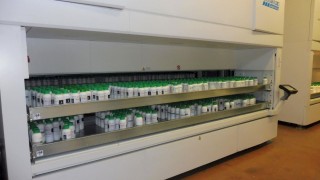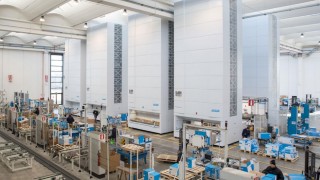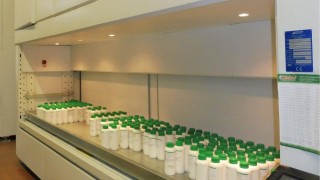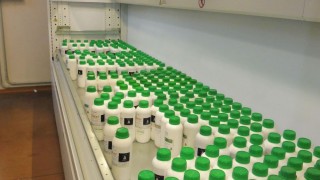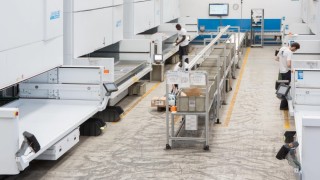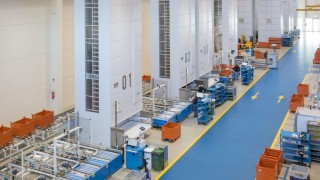CHANGES IN THE LOGISTICS CHAIN, CONSUMER BEHAVIOR, DISTRIBUTION MODELS, AND INVENTORY MANAGEMENT
Big grocery brands are facing an epic change, related to the constantly changing customers' behaviors. As customers are becoming e-customers, groceries are becoming e-groceries - also. In a country like Bulgaria, examples are endless, and the number is constantly growing. Each day a new E-grocery player is invading the market of the growing online demand.
Even brands that don’t have the capacity to create and maintain an e-commerce website and last-mile logistics solutions, use existing online grocery platforms like Glovo. The change in the logistics model seems to be evident and fast.
The logistics model is changing and evolving from a linear Retailer – Grocery – Customer model to a new Retailer - e-Grocery - Grocery- Customer, omnichannel multidimensional logistics model, where everyone must be ready to deliver to everyone, regardless of the SKU, the number of products or the number of orders per hour.
In this context, everyone should be prepared for the new market needs. Manual picking operations in the warehouse are not able to satisfy this increased demand. Old fashioned inventory management systems increase operating costs, increase operational costs and retailers may become uncompetitive.
THE ANSWER SEEMS TO BE SIMPLE WITH THE RIGHT PARTNER. It'S COST-EFFECTIVE AUTOMATION
Grocery retailers today, need to be constantly present – both online and offline. The concept of omnichannel logistics means creating systems, where physical and digital channels can share information. Customers combine online and offline experiences and the so-called constant shopping. Their behavior is evolving >>
"I GO TO THE GROCERY" >> "CHECK WHAT'S ONLINE AND GO TO THE SHOP" >> "ORDER ONLINE AND GO TO PICK IT" >> "PLEASE, BRING IT HOME" >> "BRING IT TODAY" >> "BRING IT, NOW PLEASE"
Delays between online and offline channels create a gap, called the “convenience gap”. This gap may be between retailer and customer, online and offline experience, customer expectations for quality, on-time delivery, errorless orders execution. The bigger the gap, the bigger the possibility to lose this customer
THE NEW COMBINATION OF ONLINE AND OFFLINE DELIVERY
Some customers still prefer to buy grocery products, after seeing them – fresh vegetables, seafood, etc. Sometimes, even the most detailed description on the e-commerce platform can’t make the customer buy the product online.
But the new, omnichannel logistics approach is able to meet customer needs, no matter at what exact stage of the digital behavior they are. It means an agile system with different inventory management and flexible technological and intralogistics solutions.
WHAT DOES OMNICHANNEL LOGISTICS INVOLVE?
-
Omnichannel inventory
Advanced WMS and IMS solutions offered by STAMH are able to control the flow of the products between stores, discounters, distribution hubs, and real-time end-customer deliveries. These multichannel systems permit retailers to monitor and manage inventory no matter where the product is on the complicated multichannel
-
Combined offline and online products
Some customers still prefer shopping in the store. They prefer to see the product in advance. The omnichannel approach allows customers to choose - they can be flexible in purchasing products. They can make combined purchases for the greatest convenience and satisfaction
-
Intelligent supply chain
The multi-channel system allows retailers to build a network that is synchronized with all channels and as a result, customers can use all channels with the same level of satisfaction. On the other hand, retailers have constant control over their products and have access to more information about customer preferences.
POSSIBILITY OF STEP-BY-STEP AUTOMATION, ACCORDING TO THE NEEDS AND SIZES OF EACH BUSINESS
The modular principle of the Vertical Lift Machines and the surprisingly affordable price, allow the application of flexible solutions and a number of modules, according to the specific needs and sizes of the business.
INTEGRATION OF VERTICAL LIFT TECHNOLOGY
/MHE/ MATERIAL HANDLING| SOFTWARE| FASTER ORDERS PREPARATION
-
MHE (MATERIAL HANDLING EQUIPMENT) - better management of the equipment;
-
SOFTWARE - easy integration with online ordering apps, for example;
-
VERTICAL SPACE OPTIMIZATION - in the past, logistics centers were large and regional. These are being replaced by smaller logistics hubs, equipped with compact vertical lift machines, within the cities– micro and nano logistics fulfillment centers able to handle 1,000 to 10,000 orders per day and deliver faster.
-
BETTER MANAGEMENT OF LAST-MILE LOGISTICS, errorless and fast delivery;
-
ABILITY TO MANAGE DIFFERENT PURCHASE MODELS - click and collect, home delivery, etc.
-
DIRECT CONNECTIONS BETWEEN RETAILERS, e-groceries, and end customers in one, perfectly functioning logistics system;
-
FASTER ORDERS PREPARATION - meaning faster delivery and happier e-grocery customers, shopping again in your e-shop.


